Search for lenses, articles and help

The Cannes Film Festival is one of the most prestigious and widely recognized film festivals in the world. The first official festival took place in 1946 aiming to celebrate international cinema and featured films from 21 countries.
In the years that followed, the festival became established as a major cultural event and the highest festival prize, the ‘Palme d’Or’ was introduced in 1955. Its scope now also includes strands such as ‘Directors’ Fortnight’ and ‘Un Certain Regard’ aimed at highlighting innovative and emerging filmmakers.
For the 78th festival currently taking place in the south of France, we are proud that Cooke lenses have been part of the creative process for fifteen films shot on a variety of formats by international cinematographers.
Beginning in the ‘Un Certain Regard’ strand we have ‘Aisha Can’t Fly Away’, directed by Mourad Mostafa and shot by Mostafa El Kashef on Cooke Panchro/i Classic FF lenses. Aisha is a 26-year-old Sudanese caregiver living in the heart of Cairo where she witnesses the tensions between her fellow African migrants and local gangs. Stuck between an undefined relationship with a young Egyptian cook, a gangster that blackmails her into an unethical deal in exchange for safety, and a new house she’s assigned to work in, Aisha struggles to cope with her fears and lost battles, causing her dreams to cross with reality and leading her to an impasse.
The film contains a lot of continuous 360-degree handheld shots which challenged the way El Kashef lit which led in part to using the Alexa Mini LF. “The Cooke Panchro/i FF helped me get that dusty look of Cairo with its softness and desaturated colours, and its full frame coverage fits best with the ALEXA LF.”
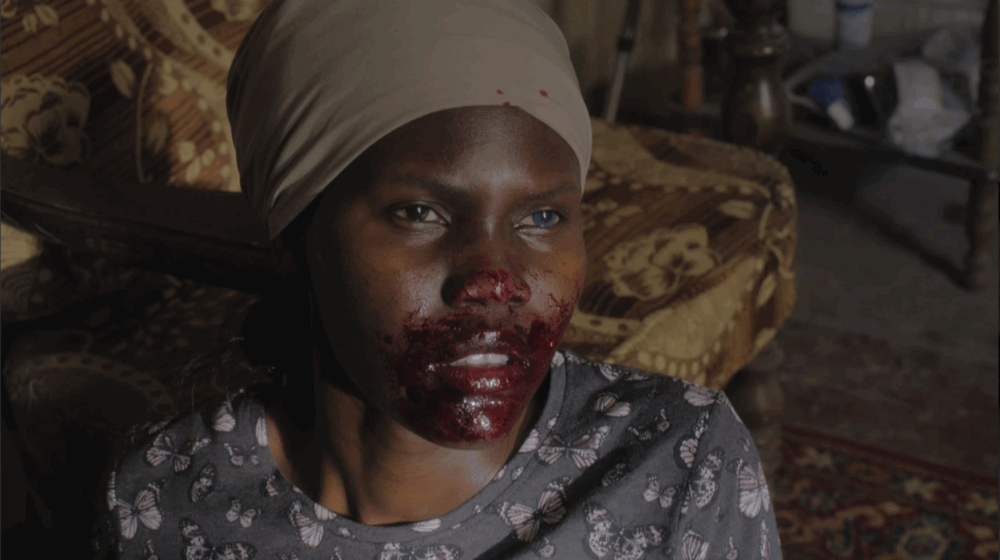
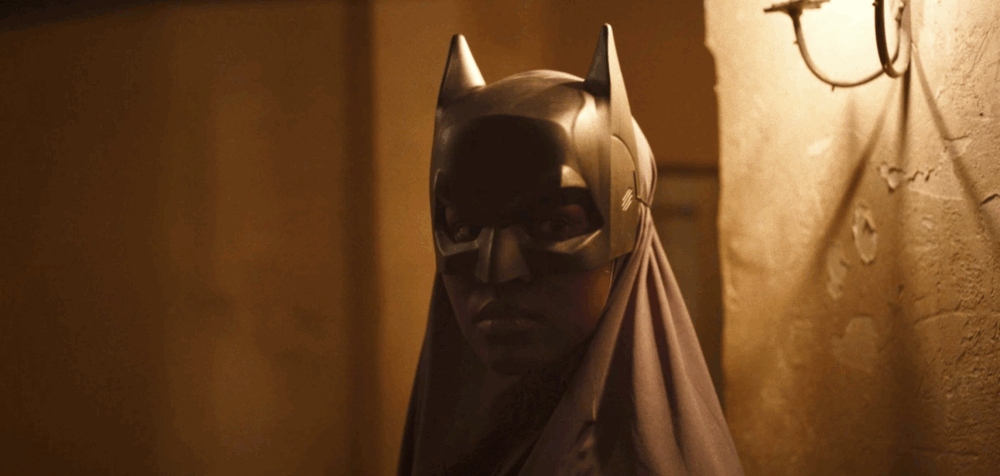
‘Karavan’ (Caravan) is directed by Zuzana Kirchnerová, with cinematography by Simona Weisslechner and Denisa Buranová who used Cooke S4/i lenses on an Alexa Mini. Ester’s just turned 45 and has nothing in her life except caring for her severely mentally disabled son, fifteen year old David who can’t speak and needs constant attention. Ester loves him deeply, but she’s drained by routine and coping alone. Friends in Italy invite her for a visit, but they find David’s unpredictable behaviour causes problems.
Weisslechener, who took over from Buranová after starting the project as camera operator, recollects “The Cooke lenses helped us show the feeling of heat and sunlight in a clear and natural way. Their gentle flare and soft image worked well with the quiet, intimate tone of the film, which follows a mother and her disabled son on a road trip. We didn’t want to stylise the world, we wanted it to feel real.”
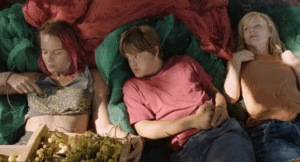
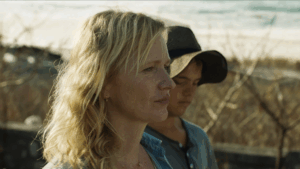
‘Karavan’, Cinematographer Simona Weisslechner
‘Testa O Croce?’ (Heads or Tails?) is directed by Alessio Rigo de Righi and Matteo Zoppis with cinematography by Simone D’Arcangelo. Set at the dawn of the 20th Century as Buffalo Bill’s Wild West show rolls into Italy and sparks the imagination of Rosa, a young woman trapped in a stifling marriage to a powerful and violent landowner. The production mixed 16mm and 35mm film stocks and used rehoused Cooke Panchro lenses for the 35mm sections to depict Rosa’s imagination.
‘O Riso E A Faca’ (I Only Rest in the Storm) is directed by Pedro Pinho and shot by Ivo Lopes Araujo who used Cooke S4/i lenses on both film and digital formats. The film follows Sergio, a Portuguese environmental engineer who travels to Guinea Bissau to conduct an impact report for a road-building project. As he grapples with heat and isolation, he meets Diara and Guillermhe—two locals equally yearning to find their own way. But as tensions arise within their ambiguous relationship and as Sergio understands the capitalist and post-colonial dynamics at play around his mission, they each have to confront how their identities shape them in a globalized world.
The production shot 35mm for the day exteriors and digital for the night interiors. In testing, the Cooke lenses became a favourite especially when paired with Kodak’s 50D stock. Ivo remembers “Watching the tests, Pedro Pinho, Tiago Espanha and I liked the very fine grain of the Kodak 50D and the texture and volume that Cooke lenses gave us, especially with an iris closed to 5.6 in wide landscapes.”
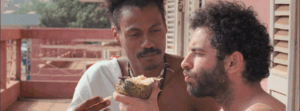
O Riso E A Faca (I Only Rest in the Storm), Cinematographer Ivo Lopes Araujo

O Riso E A Faca (I Only Rest in the Storm), Cinematographer Ivo Lopes Araujo
‘Tôi Yamanamino Hikari’ (A Pale View of Hills) begins in 1982 UK where an aspiring Japanese-British writer Niki plans to write a book based on her mother Etsuko’s post-war experiences in Nagasaki. The writer finds something at odds as she confronts the mementoes of her mother’s Nagasaki years, as well as the memories others are sharing with her. 1950s Japan is shown as Niki’s imagined interpretation.
The film is directed by Kei Ishikawa with cinematography by Piotr Niemyjski who used Cooke’s S8/i FF lenses with an Alexa Mini LF. “We chose this camera as it allowed us to work with 1:1.66 aspect ratio, using as much of the sensor area as possible. Cooke S8/i FF can cover this, but also it’s a very fast lens and helps to separate portrait from background, which was important for us.”
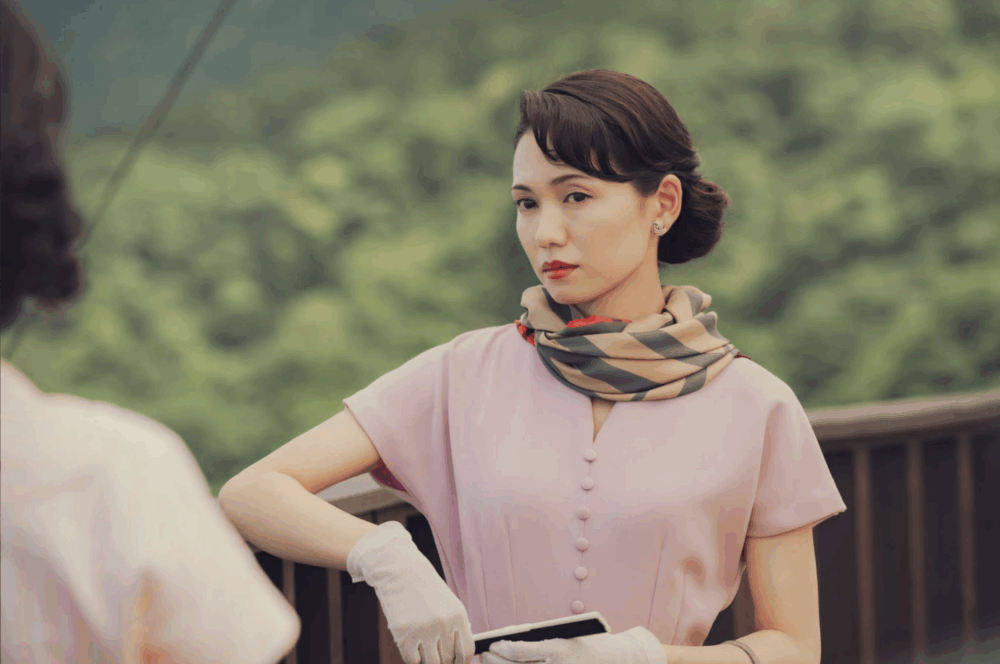

Finally in the ‘Un Certain Regard’ strand is ‘La Misteriosa Mirada Del Flamenco’ (The Mysterious Gaze of the Flamingo). Set in 1982 it follows eleven-year-old Lidia who lives with her beloved queer family in a desert mining town in northern Chile. As an unknown and deadly disease begins to spread, legend has it that it is transmitted between two men, through a simple glance, when they fall in love. While people are accusing her family, Lidia must find out whether this myth is real or not.
Diego Céspedes directs with cinematography by Angello Faccini. The duo wanted a textured, less pristine look and wanted to shoot on Super 16mm film but switched to digital due to budget constraints. After testing they settled on shooting in S16 mode on the Alexa35 with 16mm primes and the now vintage Cooke Varotal 25-250mm Zoom.
In the ‘Directors’ Fortnight’ strand is ‘Miroirs No. 3’ directed by Christian Petzold and shot by Hans Fromm who used Cooke S4/i lenses with an Alexa35. On a weekend trip, Laura survives a car crash. Unhurt but shaken, Laura is taken in by a local woman who witnessed the accident, and cares for her. Despite her families resistance, they enter into a routine. On the lenses Fromm offers “The Cookes are charming lenses which, although they are not overly crisp, always seem in focus, and they don’t reveal too many unwanted details on faces. They also serve a beautiful bokeh.”
Screening Out of Competition is ‘La Venue De L’avenir’ (Colours of Time). In 2024, a family inherits an abandoned house and is plunged back to 1895 when they discover the existence of Adèle, their ancestor who left her native Normandy for Paris. This confrontation between the two eras will call into question their present. Cédric Klapisch directs with cinematography by Alexis Kavyrchine who shot on the Sony Venice 2 with Cooke Anamorphic/i FF (1.8x) lenses to support the look of the imaginary images of the 19th century sections.
Competing for the coveted Palme d’Or in the Main Competition strand are seven films shot with Cooke lenses. We begin with ‘Renoir’ which is directed by Chie Hayakawa and shot by Hideho Urata with Cooke S4/i lenses. Suburban Tokyo, 1987. 11-year-old Fuki’s father, Keiji, is battling a terminal illness, and in and out of hospital. Her mother, Utako, is constantly stressed out from caring for Keiji while holding down a full-time job. Left alone with her rich imagination, Fuki becomes fascinated by telepathy and falls ever deeper into her own fantasy world…
On creating the look Urata offers: “For this film, we aimed to create a visual language that felt intimate, restrained, and grounded in emotional realism. We chose the ALEXA 35 with Cooke S4 lenses for their ability to render natural skin tones and soft falloff. The lenses offered just the right amount of character — slightly imperfect, with gentle flares and softness around the edges. This helped us avoid a clinical digital look and instead gave the image a warm, lived-in texture.”
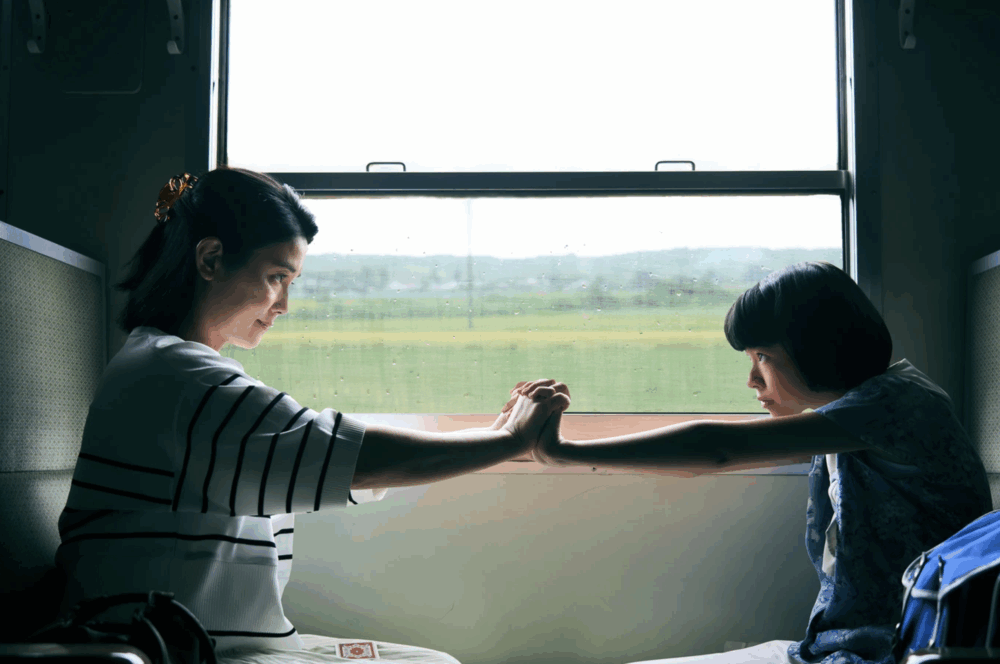
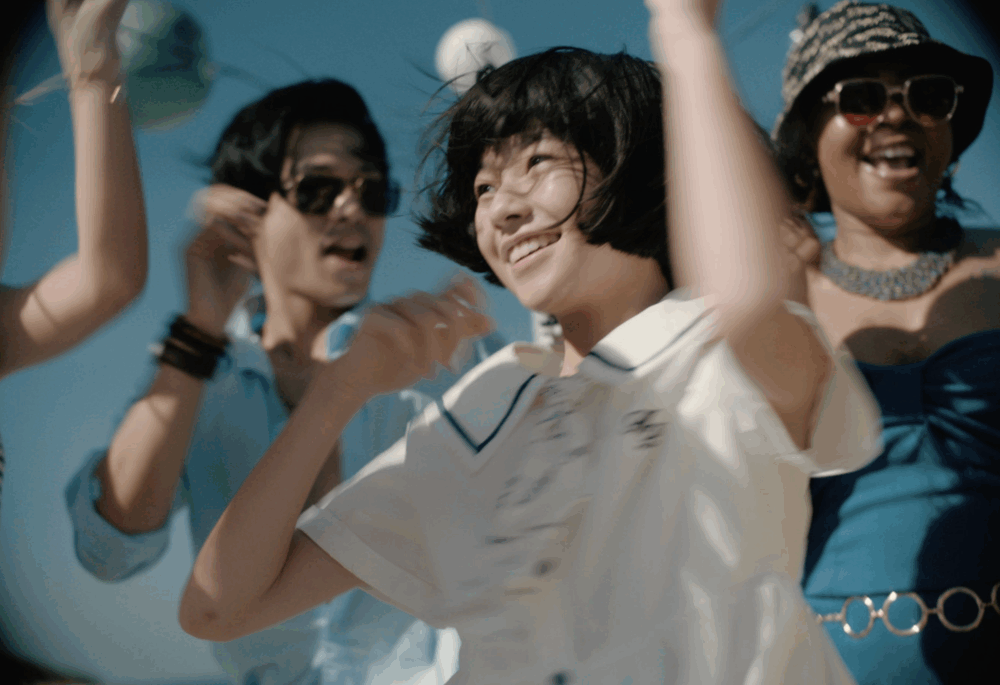
Also shot with S4/i lenses is ‘Romería’ directed by Carla Simon and shot by Hélène Louvart. Marina, 18, orphaned at a young age, must travel to Spain’s Atlantic coast to obtain a signature for a scholarship application from the paternal grandparents she has never met. She navigates a sea of new aunts, uncles, and cousins, uncertain whether she will be embraced or met with resistance. Stirring long-buried emotions, reviving tenderness, and uncovering unspoken wounds tied to the past, Marina pieces together the fragmented and often contradictory memories of the parents she barely remembers.
‘Sound of Falling’ follows four girls who each spend their youth on the same farm in northern Germany. As the home evolves over a century, echoes of the past linger in its walls. Though separated by time, their lives begin to mirror each other. Directed by Mascha Schilinski with cinematography by Fabian Gamper the film shot digitally with rehoused Cooke Speed Panchros as well as pinhole lenses to give the feeling of “a veil of forgetfulness that has covered the memories.”
Also shot partially with rehoused Cooke Speed Panchros is ‘Nouvelle Vague’ (New Wave) directed by Richard Linklater with cinematography by David Chambille. This is the story of Godard making “Breathless”, told in the style and spirit in which Godard made “Breathless”. The film shot on 35mm B&W stock on an Arri 2C with the Speed Panchros contrasted with shooting certain sections on a Sony Venice 6K with full frame lenses. “As a matter of course, we chose a b&w 35mm film look (mixed with digital), we used really old glass, we shot handheld without any high-end technology, and we wanted to keep it as simple as they did. As Godard said, we wanted the film itself to be breathless!”
‘Affeksjonsverdi’ (Sentimental Value) follows sisters Nora and Agnes reuniting with their estranged father, the charismatic Gustav, a once-renowned director who offers stage actress Nora a role in what he hopes will be his comeback film. When Nora turns it down, she soon discovers he has given her part to an eager young Hollywood star. Suddenly, the two sisters must navigate their complicated relationship with their father — and deal with an American star dropped right into the middle of their complex family dynamics.
The film is directed by Joachim Trier with cinematography by Kasper Tuxen DFF who shot on 35mm film with Cooke 5/i S35 lenses which the duo had used previously for ‘The Worst Person in the World’ “and loved them so much we wanted them again. They are sharp but still charming, real and gentle, especially in close-ups.”
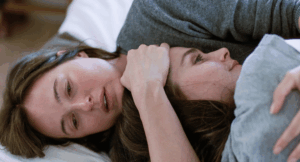
‘Affeksjonsverdi’ (Sentimental Value), Cinematographer Kasper Tuxen DFF
For ‘Zan O Bacehe’ (Woman and Child) director Saeed Roustayi and cinematographer Adib Sobhani shot digitally on an ALEXA 35 with Cooke S4/i lenses and a vintage Cooke 18-100 Zoom. Mahnaz, a 40-year-old widowed nurse, struggles with her rebellious son, Aliyar, who has been suspended from school. Family tensions reach a peak during the betrothal ceremony with her new boyfriend Hamid, and a tragic accident occurs. In the aftermath, Mahnaz will be forced to confront betrayal and loss, and to embark on a quest for justice.
Plans to shoot on celluloid became unrealistic due to unavailability of film stock and the closure of labs in Iran and Sobhani recollects “The Cooke S4/i was the best choice since the movie opens with a deep depth of field and ends with a shallow depth of field. These lenses typically prevent colour oversaturation, which helps create more realistic images.”
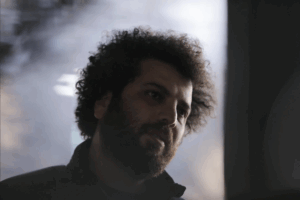
‘Zan O Bacehe’ (Woman and Child), Cinematographer Adib Sobhani
Finally in the Main Competition strand is seminal director Wes Anderson’s latest feature ‘The Phoenician Scheme’ with cinematography by Bruno Delbonnel ASC, AFC who together tell “The story of a family and a family business.” The production shot on 35mm with Cooke S4/i lenses which has been Anderson’s go-to combination for many of his films now. ‘The Phoenician Scheme’ marks Anderson’s first collaboration with Delbonnel after many previous films with Robert Yeoman ASC who you can read more about in Cooke’s extensive writeup of the duo’s work together here.
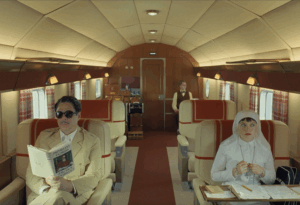
‘The Phoenician Scheme’, Cinematographer Bruno Delbonnel ASC, AFC
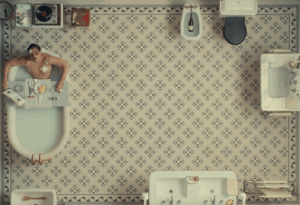
‘The Phoenician Scheme’, Cinematographer Bruno Delbonnel ASC, AFC
Cooke are proud to be a part of these varied and powerful films – thank you to all the filmmakers involved for shooting on Cooke.